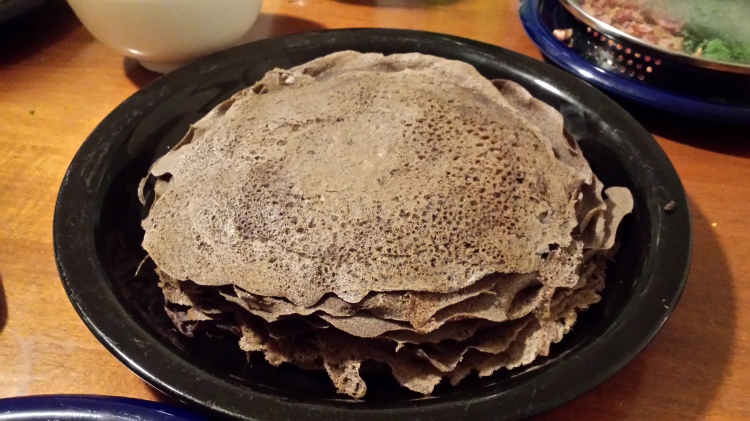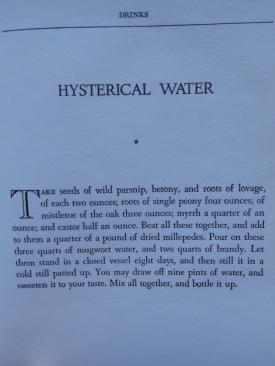 Full calorie soda is easy to hate. So much of it is made with high fructose corn syrup, plus a whole lot of calories that provide no feeling of fullness or nutrition. What it can give you is a quick sugar rush followed by a hard crash. Diet soda would seem like the magical solution: zero (or few calories), and all the delicious!!!!! Or not.
Full calorie soda is easy to hate. So much of it is made with high fructose corn syrup, plus a whole lot of calories that provide no feeling of fullness or nutrition. What it can give you is a quick sugar rush followed by a hard crash. Diet soda would seem like the magical solution: zero (or few calories), and all the delicious!!!!! Or not.
While beverages sweetened artificially may have fewer calories than their naturally or otherwise sweetened counterparts, studies strongly suggest that they cause an abundance of energy consumption elsewhere in the diet. Artificially sweetened beverages make the body immune to the normal calorie indicators of food, causing a person to consume more energy overall when artificially sweetened beverages are part of the diet. Many clinical and epidemiological studies have set out to prove this point.
In the Northern Manhattan Study over 2,500 participants were questioned about their diet and regular soft drink consumption and then followed up with over the course of 10 years. Then they compared the incidence of vascular events (stroke, myocardial infarction, vascular death) to the amount of diet and regular soda that the participants consumed. While those who were light diet soft drink consumers (1 per month up to 6 per week) did not have a significant risk of vascular events, the heavier consumers (1+ a day) did have an elevated risk of vascular events of 59%. The San Antonio Heart Study did a similar experiment with almost 4,000 participants and also found that those who consumed artificial sweeteners in beverages (soda, coffee, & tea) were much more likely to have an increased BMI at their follow up 7-8 years after the initial questioning. While these studies cannot directly tie artificial sweetener consumption to weight gain, and in fact they do not prove that consuming diet soda is bad for your health, they show that there is a positive relationship between artificial sweetener consumption and increased BMI and risk of vascular events. So they show a correlation between people who are generally making poor decisions about their health and people who are consuming diet soda.
The study “High-Intensity Sweeteners and Energy Balance” examined rat food consumption after being served yogurt sweetened with glucose vs. yogurt sweetened with saccharin. The rats that were served saccharin sweetened yogurt ate more of their regular food and gained more weight over the course of the study. This was attributed to the Pavlovian conditioning principles. Since the sweet flavor is no longer an indicator of the caloric value of the food, “the ability of sweet taste to evoke cephalic phase responses would be degraded, with the result being less effective energy regulation and increased caloric intake when normal sweet (and high calorie) foods are consumed.” Therefore, consuming foods where the usual indicative properties (like sweetness) do not accurately represent their caloric values causes an imbalance in energy regulation. This study provides more concrete proof for the various epidemiological studies that have occurred where participants who consume artificially sweetened beverages have more weight issues and are more susceptible to vascular events.
In the article “Gain weight by ‘going diet?’ Artificial sweeteners and the neurobiology of sugar cravings” Qing Yang argues that sweet taste (either from sugar or artificial sweeteners) causes an enhanced human appetite. He says this is because artificial sweeteners are treated differently by food reward pathways than natural sweeteners. This is an issue since “animals seek food to satisfy the inherent craving for sweetness, even in the absence of energy needs. Lack of complete satisfaction, likely because of the failure to activate the postingestive component, further fuels food seeking behavior.” So because artificial sweeteners are recognized by the body differently than natural sweeteners, and because they make the body used to a certain level of sweetness, they cause excessive energy consumption and make consumers more at risk for obesity and diseases caused by obesity.
The issues with diet soda are more likely psychological than physical. If a person who eats healthfully and exercises regularly consumes diet soda, they are not going to start gaining weight because of it. But this healthful soda drinker is not the norm. Since diet soda is seen as a lesser evil than regular soda, it could lead to other poor food choices….oh since I’m having a diet soda I can have the double cheeseburger instead of the salad! Because there are no calories but sweetness is still present, your body becomes used to that level of sweetness and wants other foods to be at a similar level. But artificial sweeteners are vastly sweeter than natural sugar. Aspartame (Equal, Nutrasweet) is 180 times sweeter than sugar, saccharin (Sweet’N Low) is 300 times sweeter than sugar, and sucralose (Splenda) is 600 times sweeter than sugar.
Sugar cravings are serious, and if you’re constantly satisfying it you crave more and more. Taste buds change, and you can tolerate higher and higher levels of sweetness just like you can adapt to tolerate higher levels of spiciness. But the more sweetness you remove from your diet, the more you will be satisfied by less and less sugar. I can’t, nor can all these scientists, say that diet soda and artificial sweeteners are the cause of weight gain (because they’re probably not). But, if you are drinking diet soda regularly, you need to take a hard look at the other dietary choices you are making.
If you do want to cut diet soda out of your diet (YAY!), don’t try to do it all at once. Try having one less a day, or replacing one a day with a seltzer, and after a few weeks cut back more (but eventually cut out the seltzer too…it’s just bottled water). Then when you do go back and drink one once in a blue moon, it will be so much more rewarding (or you may not even like it anymore). The same goes for artificial sweeteners like Splenda, Equal, and Sweet’N Low, or even real sugar you are trying to get out of your diet: cut back a little a time.
Bibliography
Artificial Sweeteners. Harvard School of Public Health. http://www.hsph.harvard.edu/nutritionsource/healthy-drinks/artificial-sweeteners/
Fowler, Sharon P., Ken Williams, Roy G. Resendez, Kelly J. Hunt, Helen P. Hazuda and Michael P. Stern. “Fueling the Obesity Epidemic? Artificially Sweetened Beverage Use and Long-term Weight Gain.” Obesity 16 (2008): 1894-1900.
Gardener, Hannah, Tatjana Rundek, Matthew Market, Clinton Wright, Mitchell S. V. Elkind, and Ralph Sacco. “Diet Soft Drink Comsumption is Associated with an Increased Risk of Vascular Events in the Northern Manhattan Study.” J Gen Intern Med 27.9 (2012): 1120-6.
Swithers, Susan E., Askley Martin, and Terry L. Davidson. “High-Intensity Sweeteners and Energy Balance.” Physiol Behav, 100.1 (2010): 55-62.
Yang, Qing. “Gain weight by ‘going diet?’ Artificial sweeteners and the neurobiology of sugar cravings” Yale Journal of Biology and Medicine 83 (2010): 101-108.
 I studied abroad in Liverpool, England. I lived in a single room on a hallway of first year students where we shared 2 large communal kitchens. Shopping for myself was a grand weekly adventure. The eggs were not refrigerated. The best cookies had the blandest name (digestives!). Peppers were called capsicum and zucchinis were called courgettes. In one of my first weeks I purchased golden syrup thinking it was maple syrup (they are NOT the same). It didn’t occur to me to think it odd that it was so cheap and also that there were not many maple trees in England.
I studied abroad in Liverpool, England. I lived in a single room on a hallway of first year students where we shared 2 large communal kitchens. Shopping for myself was a grand weekly adventure. The eggs were not refrigerated. The best cookies had the blandest name (digestives!). Peppers were called capsicum and zucchinis were called courgettes. In one of my first weeks I purchased golden syrup thinking it was maple syrup (they are NOT the same). It didn’t occur to me to think it odd that it was so cheap and also that there were not many maple trees in England.







